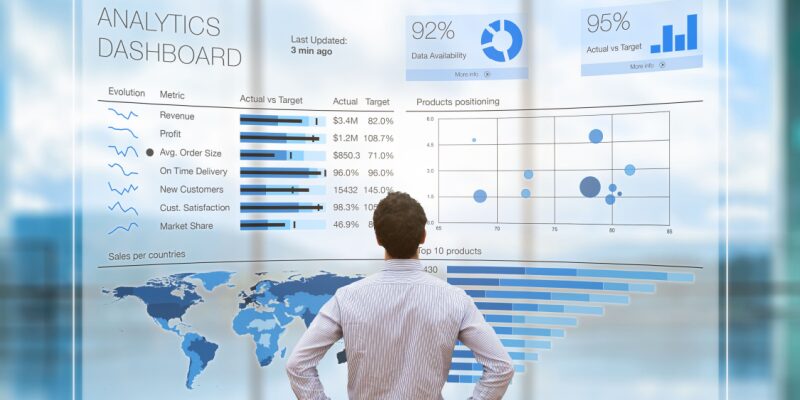Business Intelligence (BI) plays a crucial role in driving data-driven decision making within organizations. It involves the collection, analysis, and presentation of business data to facilitate informed decision making at various levels of an organization. Here are some key aspects of how BI supports data-driven decision making:
- Data Collection and Integration: BI systems gather data from multiple sources such as databases, spreadsheets, enterprise applications, and external sources. This data is integrated, cleaned, and transformed into a consistent format, allowing decision-makers to access and analyze a comprehensive view of the organization's data.
- Data Analysis and Exploration: BI tools provide powerful analytical capabilities to extract valuable insights from data. They enable users to perform various types of analysis, including statistical analysis, data mining, trend analysis, and predictive modeling. By exploring data, decision-makers can identify patterns, trends, correlations, and anomalies that inform their decision-making process.
- Data Visualization: BI tools present data in intuitive and interactive visual formats, such as charts, graphs, dashboards, and reports. Visualizations make it easier for decision-makers to understand complex data and identify key insights at a glance. Interactive dashboards allow users to drill down into specific data points, filter information, and customize views based on their requirements.
- Real-Time Reporting and Monitoring: BI systems enable real-time or near-real-time reporting, allowing decision-makers to access the most up-to-date information. Real-time data monitoring helps organizations identify emerging trends, monitor key performance indicators (KPIs), and respond quickly to changes in the business environment. This supports proactive decision-making and the ability to seize opportunities or mitigate risks promptly.
- Data-Driven Performance Measurement: BI facilitates the establishment and tracking of KPIs and performance metrics aligned with organizational goals. Decision-makers can measure and monitor performance against targets, identify areas of improvement or underperformance, and take data-driven actions to address them. This enables a continuous improvement cycle and supports evidence-based decision making.
- Predictive and Prescriptive Analytics: BI systems can leverage advanced analytics techniques, such as predictive modeling and prescriptive analytics, to forecast future outcomes and recommend optimal courses of action. These capabilities enable organizations to anticipate market trends, optimize processes, mitigate risks, and make proactive decisions based on data-derived insights.
- Self-Service BI: Modern BI platforms often offer self-service capabilities, allowing business users to access and analyze data independently without heavy reliance on IT departments. Self-service BI empowers users to explore data, create ad hoc reports, and gain insights quickly, fostering a culture of data-driven decision making throughout the organization.
By leveraging BI, organizations can harness the power of their data to make informed decisions that are backed by evidence, rather than relying solely on intuition or anecdotal information. BI enables decision-makers to understand their business better, identify opportunities, optimize processes, and respond effectively to market changes, ultimately driving improved performance and competitive advantage.






